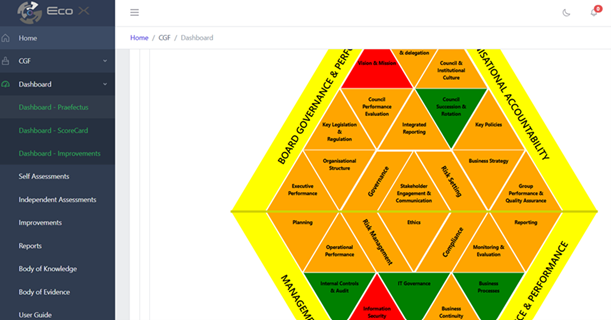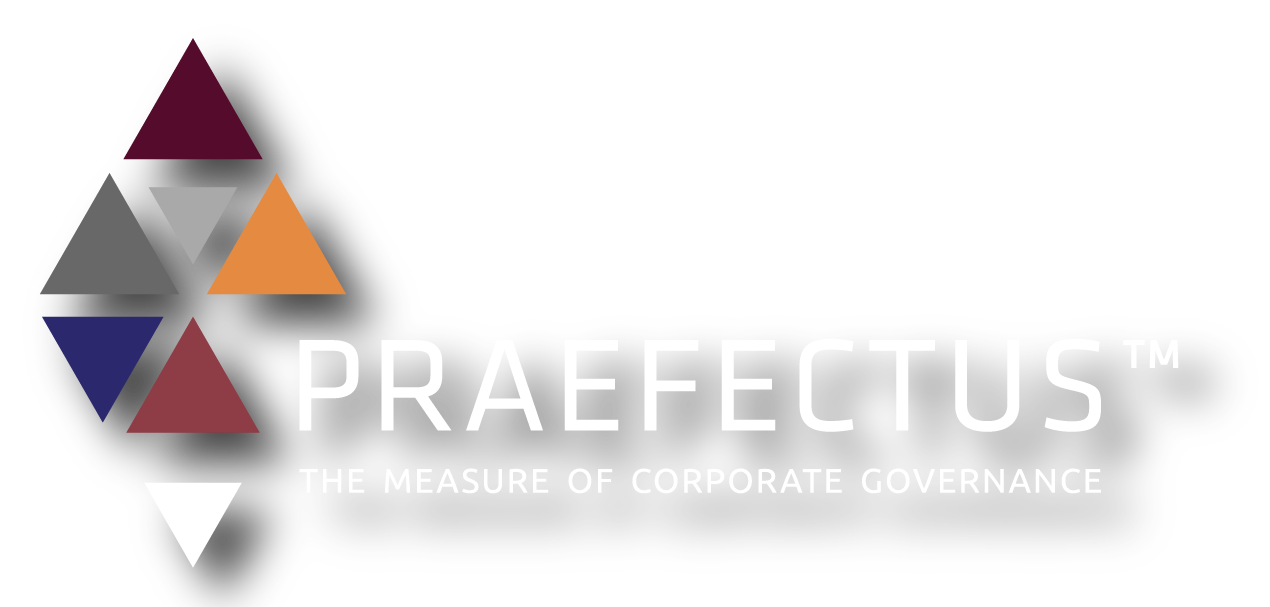Conversations on board leadership often centre on strategy, oversight, and navigating risk and uncertainty - these are timeless pillars of effective governance. These discussions underscore that strong boards are vital for steering organisations through complexity while upholding fiduciary duties. Globally influential governance codes like King IV™ and its successor King V™ (2025) from South Africa have shaped international best practices, inspiring frameworks like the G20/OECD Principles of Corporate Governance and COSO ERM to promote integrated, outcomes-based leadership that leverages technology for transparency and efficiency.
Yet, many boards remain reliant on backward-looking reports and fragmented updates. Too often, boards make critical decisions based on incomplete, filtered, or delayed information. The result? The board’s decisions are guided by partial or disjointed insights rather than a holistic view of the organisation.
Many organisations approach governance primarily through risk discussions, using traditional ERM tools, leaving boards focused on discrete parts of the picture rather than governance as a whole. This limits agile decision-making and can obscure a clear forward-looking strategy, leading to hopeful rather than assured outcomes. In an era of rapid change, this is a critical vulnerability that boards must address. Without a digitised governance framework, boards are, metaphorically speaking, “flying blind.” Governance codes like King V™ illustrate how technology-enabled governance can enhance transparency, effectiveness, and efficiency, setting benchmarks for global practice.
Moving from oversight to insight
Modern governance is evolving into a dynamic, technology-driven discipline worldwide. Boards and executives now have the opportunity to operate from a shared, real-time view of the organisation’s digitised governance framework. Such frameworks cover key governance requirements across strategic and operational areas while contextualising governance maturity in terms of strategy, risks and controls.
The transformative power of digitised governance frameworks lies in several areas:
- Immediate visibility: They provide real-time insights into key governance activities and performance indicators, enable boards to monitor strategic progress and governance risks dynamically.
- Unified strategic approach: They align directors and executives around a single version of the truth, fostering cohesive decision-making. By consolidating governance information into a single governance framework, boards can see the interplay between strategy, risk, and compliance - echoing King V™’s principles for streamlined governance supported by structured processes and accessible tools.
- Proactive discussions: They shift board conversations from reactive to forward-looking, enabling strategies that anticipate challenges rather than merely respond to them.

King V™’s expanded Principle on Information and Technology Governance supports this forward-thinking approach by advocating for the ethical and responsible use of technologies, including AI, with human oversight proportional to risk. This aligns with international guidelines such as the OECD’s AI Principles and South Africa’s National Artificial Intelligence Policy Framework (2024), ensuring that digitised governance frameworks can provide actionable insights whilst remaining responsible and compliant across jurisdictions.

Steering board agendas with precision
With real-time governance insights, chairpersons and directors can guide board and committee discussions with precision. Emerging risks or urgent matters that surface in the digitised governance framework allow boards to adapt their agendas dynamically, ensuring that critical topics receive timely attention. This agility reinforces fiduciary responsibilities and supports informed oversight.
King V™’s emphasis on outcome-based governance and “apply and explain” reporting empowers boards to drive transparency and demonstrate effective oversight. Complemented by data security and privacy principles aligned with South Africa’s POPIA and the EU’s GDPR, digitised governance frameworks provide a structured approach to protecting sensitive information, supporting informed and accountable decision-making without compromising compliance.
Navigating the fog of change
Despite the clear benefits, adoption of digitised governance frameworks remains relatively slow. Cultural resistance, perceived costs, and lack of awareness often deter those charged with governance (TCWG) from embracing tools that could enhance oversight and safeguard their organisations. Yet, these governance frameworks which offer real-time governance maturity tracking, address these barriers by simplifying compliance, enhancing transparency, and aligning with global standards.

In a world of constant disruption, real-time governance visibility enables boards to move from hope to evidence, from intuition to insight and foresight. By embracing digitised governance frameworks, boards can navigate complexity with clarity, confidence, and credibility - much like a fighter jet cutting through turbulent skies. King V™’s principles -- mindful of the 4th and 5th Industrial Revolution -- encourages organisations to leverage innovative technologies to enhance decision-making and stakeholder engagement, reinforcing global trends in sustainable governance.
A call to action
Real-time, digitised governance is no longer optional. It is foundational for sustainable, agile leadership. Without it, even the most skilled boards operate with fragmented information rather than a comprehensive, integrated perspective.
Boards that adopt a digitised governance framework are better positioned to uphold their fiduciary duties, anticipate challenges, and act decisively in an uncertain world. King V™’s consolidated and accessible framework, building on the global influence of King IV™, sets a leading standard for organisations everywhere to implement digital governance tools that drive efficiency, effectiveness, transparency, and accountability.
Aligned with King V™ and global governance standards, frameworks like the Corporate Governance Framework® provide organisations with a structured, evidence-based approach to enhance oversight, strategic alignment, and accountability. By embracing these tools, boards can transform governance from static reporting to real-time insight, empowering leadership to act with foresight and precision.
ENDS
Words: 916
For further information contact:
Terrance M. Booysen (CGF: Chief Executive Officer) - Cell: +27 (0)82 373 2249 / E-mail: [email protected]
Jené Palmer (CGF: Director)) - Cell: +27 (0)82 903 6757 / E-mail: [email protected]
CGF Research Institute (Pty) Ltd - Tel: +27 (0)11 476 8261 / Web: www.cgfresearch.co.za
Follow CGF on X: @CGFResearch
Click below to read more...

